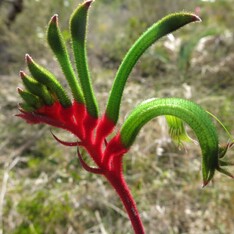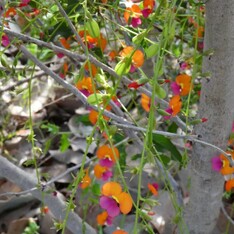We acknowledge we are in Wadandi Country and pay our respects to Elders past, present and emerging
Wadandi Country
The traditional owners of this area are the Noongar Wadandi people. For centuries they lived in harmony with the Tuart Forest and cleverly managed the flora and fauna availability, so food and shelter were always in supply.
You can read more about how the traditional owners managed the forest and lived off the land here on pages 74 -78 of the Approved Conservation Advice (incorporating listing advice) for the Tuart (Eucalyptus gomphocephala) woodlands and forests of the Swan Coastal Plain ecological community. Environment Protection and Biodiversity Conservation Act 1999 (EPBC Act) (s266B)
Noongar seasonal calendar
The Noongar seasonal calendar gives us insight into the activities they conducted to manage the environment in a truly sustainable way.
Creating the conditions to thrive
The Tuart tree is sporadic (inconsistent) in its ability to produce viable seeds and when it does, the ground conditions make an enormous difference in the success of the seed's germination.
The traditional owners, the Wadandi people, recognised the vulnerabilities of this magnificent tree as well as its importance to the dependent plants and animals of the area. One of the practices they employed was to burn the forest floor every 3-5 years.
Due to the frequency, the fire would burn low and slow allowing the animals time to get to safe ground and preventing the trees from catching fire thus keeping tree habitats intact.
This practice supported the germination of the Tuart seed as it preferred the ash bed for initial growth and, the fire destroyed the threats from ants and unfavourable fungi that could easily destroy a germinating seed. The gap between regular burns allowed the new seedlings to thrive to a size that did not see them destroyed in a future low slow burn.
The other benefit this type of burn revealed was the amazing new plant growth that shot up in abundance in the months following the fire. These fresh and tasty morsels provided a regenerative food supply for the dependent animals and the Wadandi people. Harmonious!
Natures gift
What’s so special about the Tuart Tree?

The Tuart woodlands is listed as critically endangered according to the Australian Government, but as of this date (May 2022) there is no adopted plan or made recovery plan for this precious ecological community
Paper on tuart woodlands and forests of the Swan coastal plain: A significant Ecological community
Beauty and bounty
The abundance of plants once available in the Tuart Forest provided a never-ending supply of food for the Wadandi people and many of native animals. Living harmoniously in the Tuart Forest environment.
There are at least 38 different orchid (Orchidaceae) plants identified in the Tuart Forest. Some of these beautiful plants are much harder to find than others.
Check out the full list of native flora that can be found in the Tuart Forest and read about their traditional uses.
Fawna pics
Once home to a host of mammals, birds, reptiles, and amphibians the tuart forest and its biodiversity are under threat. Take a list of all of the fauna you could once see in the tuart forest on page 143 – 151 of this publication below.






